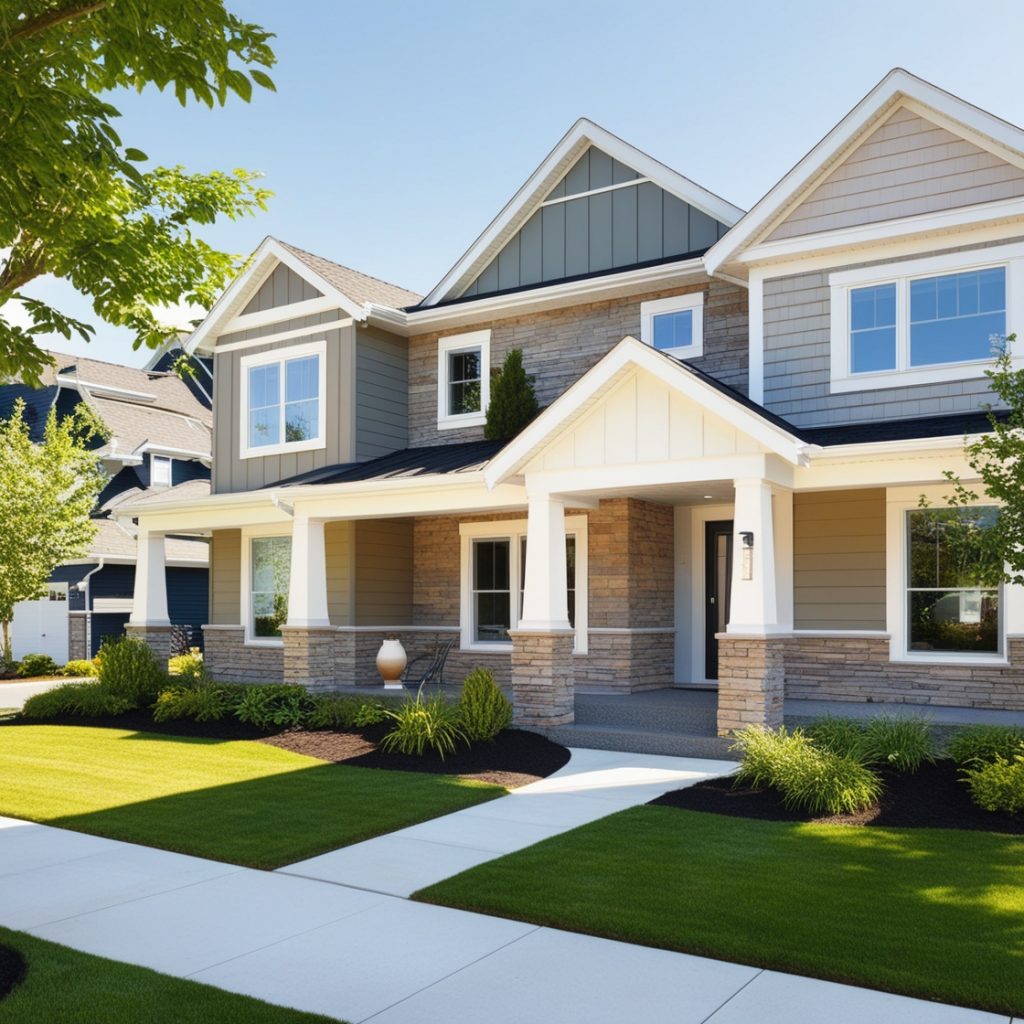Siding installation is a crucial aspect of home improvement, offering both aesthetic appeal and protection against the elements. However, even the most experienced DIY enthusiasts or contractors can make mistakes that lead to costly repairs or diminished curb appeal. In this guide, we’ll explore the top mistakes to avoid when installing siding to ensure a durable and visually pleasing result.
1. Choosing the Wrong Siding Material
One of the most common mistakes homeowners make is choosing the wrong siding material for their home’s climate and aesthetic needs. For instance, wood siding offers a classic look but requires regular maintenance to prevent rot and insect damage, especially in humid climates. Vinyl siding, while low-maintenance and cost-effective, may not provide the desired look for all homes and can crack in extremely cold weather. It’s essential to research and select a material that fits your home’s style and withstands the local climate.
2. Improper Surface Preparation
Surface preparation is a critical step that should never be overlooked. Failing to properly clean and prepare the surface before installing siding can lead to problems down the road. Dirt, mold, and old paint must be removed, and the surface should be dry and smooth. Any existing damage to the wall should be repaired before the siding is installed. Skipping this step can cause the siding to buckle, warp, or even fall off over time.
3. Incorrect Installation Techniques
Even if you’ve chosen the right material and prepared the surface, improper installation techniques can ruin the entire project. One common mistake is nailing the siding too tightly to the wall. Siding needs room to expand and contract with temperature changes, and tight nailing can cause it to warp or crack. Always follow the manufacturer’s guidelines on how to nail and space the siding. Another mistake is failing to stagger the joints properly, which can lead to an unsightly, repetitive pattern that detracts from the overall look of your home.
4. Ignoring the Importance of Flashing
Flashing is an essential component that prevents water from seeping into your home at the joints and edges of the siding. Unfortunately, many DIYers and inexperienced contractors neglect this step or install the flashing incorrectly. Without proper flashing, water can infiltrate your walls, leading to mold, rot, and structural damage. Ensure that flashing is installed correctly around windows, doors, and other openings to keep your home watertight.
5. Failing to Account for Expansion and Contraction
Siding materials, particularly vinyl, expand and contract with changes in temperature. A common mistake is installing the siding panels too closely together, which doesn’t allow for this natural movement. This can result in buckling or gaps as the temperature fluctuates. To avoid this, make sure there is a small gap between panels, as recommended by the manufacturer, to accommodate expansion and contraction.
6. Poor Attention to Detail Around Windows and Doors
The areas around windows and doors are particularly prone to mistakes during siding installation. Cutting the siding too short or too long around these openings can lead to gaps that allow water and pests into your home. Additionally, failing to properly seal these areas can result in energy loss and higher utility bills. Use precise measurements and high-quality sealants to ensure a snug and secure fit around windows and doors.
7. Neglecting to Install a Moisture Barrier
A moisture barrier, such as house wrap, is essential for protecting your home from water damage. Some homeowners skip this step to save time or money, but doing so can lead to serious issues down the road. Without a moisture barrier, water can penetrate your walls, leading to mold growth, rot, and structural damage. Make sure to install a high-quality moisture barrier before applying the siding to ensure long-term protection.
8. Overlooking Proper Ventilation
Proper ventilation is crucial for maintaining the integrity of your siding and the overall health of your home. Without adequate ventilation, moisture can become trapped behind the siding, leading to mold growth and rot. This is especially important in humid climates or areas prone to heavy rainfall. Ensure that there are proper vents and that the siding is installed in a way that allows air to circulate behind it.
9. Not Following the Manufacturer’s Instructions
Each type of siding comes with specific installation guidelines provided by the manufacturer. Ignoring these instructions or relying on general knowledge can lead to mistakes that compromise the siding’s performance and warranty. Always read and follow the manufacturer’s instructions carefully to ensure that the siding is installed correctly and that your warranty remains valid.
10. Underestimating the Importance of Professional Help
While many homeowners are eager to tackle siding installation as a DIY project, it’s important to recognize when professional help is needed. Siding installation requires precision, experience, and the right tools. Hiring a professional contractor can save you time, money, and potential headaches by ensuring the job is done right the first time.



